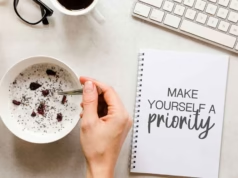If you’re sourcing products from China, you’re not alone. Thousands of businesses around the world rely on Chinese factories for manufacturing everything from electronics to clothing to furniture. But with long-distance production comes a big question: how do you make sure the quality of the product meets your standards before it gets shipped?
That’s where professional product inspection comes in. It’s your way of putting eyes on the goods before they ever leave the factory floor. But what does the process really involve? Is it worth it? What should you expect? This blog will break it down in simple, clear terms so you can feel confident in your next order.
Why Product Inspection Matters
When you’re not present at the factory, things can easily go wrong. Even if you’ve selected a reliable supplier, there’s always the risk of production errors, quality defects, or miscommunication. A small mistake can lead to lost money, disappointed customers, or damaged brand reputation.
Product inspection helps prevent these problems by giving you a full report on your goods before they are shipped. You get to know if the products are made correctly, meet your requirements, and match the approved samples.
It’s not just about spotting defects—it’s about building a system of trust and consistency in your supply chain.
Types of Product Inspections
There are different kinds of inspections depending on the stage of production. Here are the most common:
- Pre-Production Inspection (PPI): This happens before manufacturing begins. Inspectors check raw materials, factory equipment, and production plans to prevent issues from the start.
- During Production Inspection (DUPRO): This takes place when 20–60% of the production is complete. It helps catch defects early so corrections can be made.
- Final Random Inspection (FRI): This is the most common. It happens when the order is 100% completed and 80% packed. Inspectors randomly select items and test them based on your specifications.
- Container Loading Check (CLC): The last check ensures the right products are loaded in the correct quantity and in good condition.
Each inspection plays a vital role in reducing the chances of receiving low-quality goods.
What Happens During a Final Inspection?
A Final Random Inspection (FRI) is the most requested type of product inspection. Here’s what happens step-by-step:
- Sampling: Inspectors choose random samples using industry-standard methods such as AQL (Acceptance Quality Limit). This ensures fairness and accuracy.
- Visual Check: The selected products are examined for visual defects like scratches, dents, color mismatches, loose parts, or poor stitching.
- Function Testing: Depending on the product, inspectors test if it works as intended. For example, checking if electronics power on, if zippers zip, or if chairs are stable.
- Measurement Check: Inspectors measure the product dimensions to make sure they match your requirements.
- Packaging & Label Review: They check packaging quality, shipping labels, barcodes, and user manuals to confirm everything is correct and professional.
- Report & Photos: After the inspection, a detailed report with photos is shared. It includes findings, defect types, quantity, and whether the batch passes or fails.
What Can You Expect from a Good Inspector?
A reliable inspector is more than just a person with a clipboard. They should:
- Be fluent in the local language and English.
- Understand your product and quality standards.
- Be detail-oriented and honest.
- Follow international inspection methods and ethical practices.
- Deliver reports fast, usually within 24 hours.
Some inspection agencies offer live video calls during the inspection, so you can see things in real time. Others use AI-driven inspection tools to speed up the process.
Choosing a trusted inspection company gives you the benefit of unbiased feedback. They don’t work for the factory, so their priority is your quality—not the supplier’s reputation.
Cost vs. Value of Inspections
Some importers hesitate to pay for inspections thinking it’s an extra cost. But consider this: catching one critical mistake early can save thousands of dollars in returns, refunds, and damaged reputation.
The cost of a standard inspection in China usually ranges from $150 to $300 per man-day. This price depends on the product complexity, location, and number of units.
Considering the value it brings—peace of mind, reduced risk, and better customer satisfaction—it’s a smart investment.
Common Mistakes to Avoid
While inspections are helpful, they aren’t magic. Here are some mistakes to avoid:
- Skipping the inspection: Some importers trust the supplier blindly. Even the best factory can make mistakes. Never skip a final check.
- Not providing clear criteria: Be specific about what you want inspected. Share your requirements in advance to avoid confusion.
- Ignoring the report: If the report highlights issues, take them seriously. Work with the supplier to resolve them before shipment.
- Using factory employees for inspection: Avoid using in-house staff from the factory for checks. It defeats the purpose of an unbiased inspection.
How to Book a Product Inspection in China
Booking an inspection is simple. Here’s a general process:
- Choose a third-party inspection agency.
- Share your product details and checklist.
- Schedule the inspection date.
- Wait for the report within 24 hours.
Make sure to include important details like your product specifications, photos, tolerance levels, and any tests you want conducted. The clearer your instructions, the better the results.
Working with a professional product inspection team ensures you’re in control—even when you’re miles away from the factory.
Final Thoughts
If you’re sourcing from China, quality control isn’t optional—it’s essential. A product inspection bridges the gap between your expectations and your supplier’s delivery. It helps you catch problems early, avoid costly returns, and build a solid brand.
Partnering with a trusted inspection company gives you the confidence that your product is in safe hands before it ever leaves the warehouse. Whether you’re importing electronics, textiles, or furniture, taking this extra step means delivering quality every time.
So next time you’re ready to ship from China, ask yourself: did you inspect, or did you just hope for the best?







